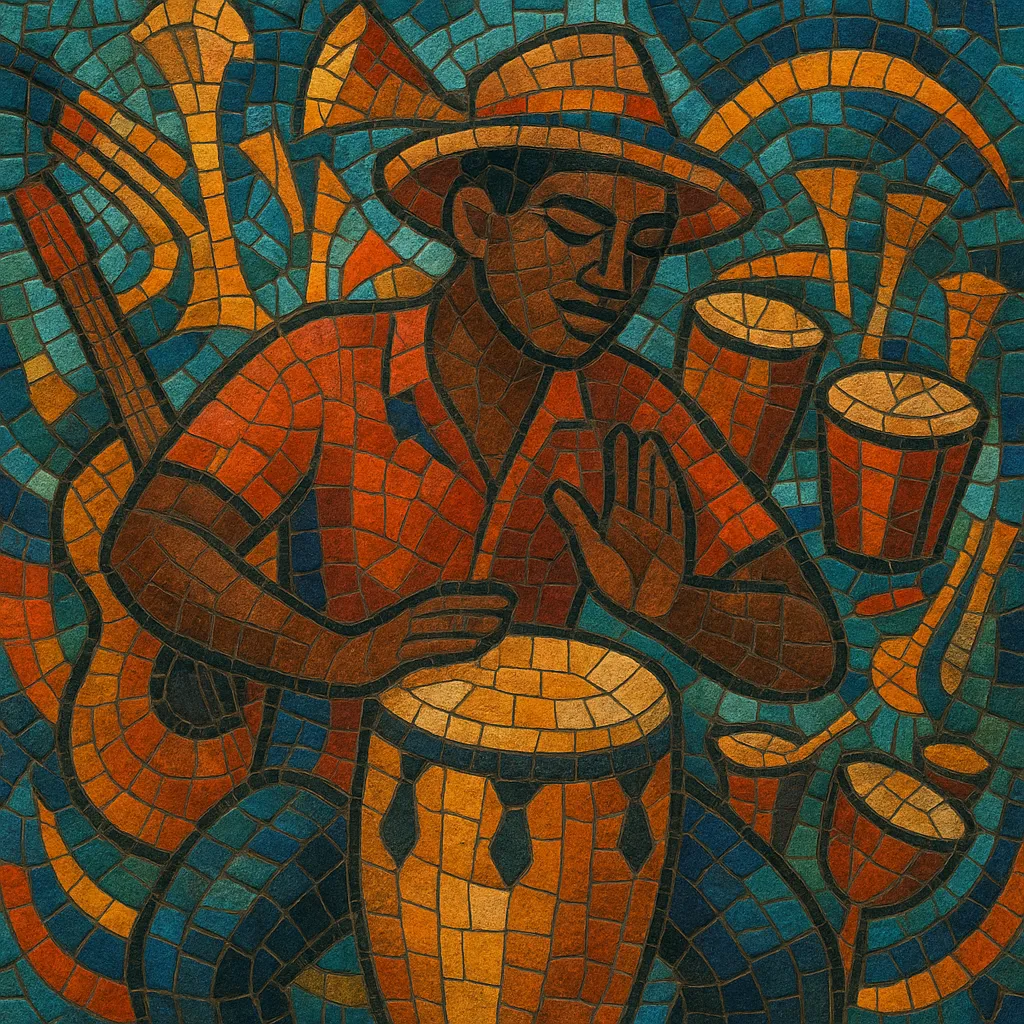
Latin house is a dance music style that fuses the four-on-the-floor drive of house with Afro–Latin and Caribbean rhythms, percussion, and song forms. It typically sits around 120–128 BPM and features congas, bongos, timbales, cowbells, güiro, and claves layered over punchy house drums and a syncopated, tumbao-inspired bass.
Harmonically, Latin house often borrows from salsa, boogaloo, and Latin jazz: montuno piano riffs, brass stabs, and ii–V–I motion appear alongside soulful or Spanish-language vocals and call-and-response choruses. Its sound coalesced in late-1980s New York, Chicago, and Miami—Latin diaspora hubs where DJs and producers blended garage and Chicago house with salsa and merengue club culture.
The result is an uplifting, dancefloor-focused style that balances the sleek repetition of house with the celebratory swing, polyrhythms, and melodic vibrancy of Latin music.
Latin house emerged in late-1980s United States club culture, especially in New York, Chicago, and Miami. As house music spread from Chicago’s underground to East Coast clubs, Puerto Rican, Dominican, Cuban, and broader Latin communities brought salsa, merengue, boogaloo, and Latin jazz into the mix. DJs and producers began layering hand percussion, montuno pianos, and Spanish/Spanglish vocals onto garage and Chicago house grooves.
Key figures such as Little Louie Vega (later one half of Masters at Work), David Morales, and Latin-rooted scenes in NYC helped codify the sound. Their approach retained the DJ-friendly structure of house—extended intros/outros and loop-driven arrangements—while infusing Afro–Latin rhythmic phrasing and song sensibilities.
The 1990s saw Latin house mature and diversify. Masters at Work (Louie Vega and Kenny "Dope" Gonzalez) became central to the style, drawing deeply from salsa, boogaloo, and Latin jazz while maintaining club effectiveness. Their Nuyorican Soul project bridged live Latin instrumentation and house sophistication, showing how the genre could be both organic and dancefloor-ready.
Labels and parties in New York and Miami (including the Subliminal camp with Erick Morillo, Harry Romero, and Jose Nunez) spread a slick, percussive strand of Latin house globally. Meanwhile, Chicago’s DJ Sneak and others folded Latin flair into jacking and filtered house approaches.
Through the 2000s, Latin house aesthetics filtered into mainstream house, Latin pop, and global club music. Producers across Latin America and Europe adopted its percussion language and vocal styles. The rise of electro-latino and later guaracha EDM in Colombia reflected a direct lineage from house frameworks blended with Latin rhythms.
Latin house’s DNA—house drums plus Afro–Latin percussion and melodic tropes—echoes in modern tribal house, electrocumbia, and electro-latino, and it subtly informs strands of tropical house and Latin dance pop. Today, the genre remains a staple in club culture and a toolkit for producers connecting dancefloor propulsion with Latin musical identity.

